5 Simple Exercises Than Can Help Improve Your Posture—No Equipment Needed
Stop slouching and start training those postural muscles.
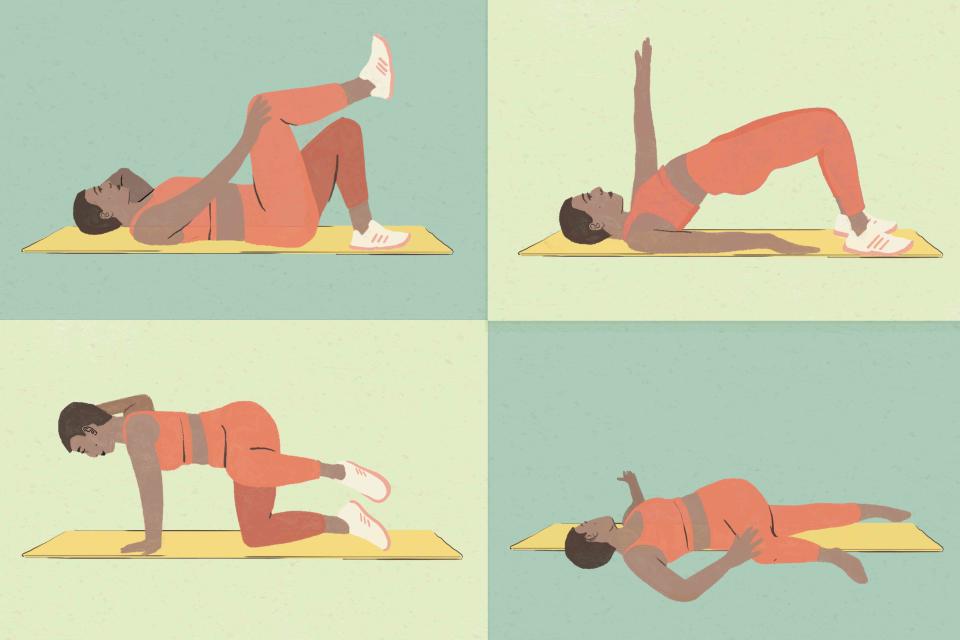
If you’re worried your posture is slipping lately, join the club. You only need to look up to notice pretty much everybody slumped over looking at their phones or slouching at their desks. Another culprit driving poor posture, beyond how you hold yourself while still, is having an inactive or sedentary lifestyle. Improving your posture requires not only sitting (and standing) properly, but moving properly and moving more.
“Sitting at a desk and looking at a computer screen for eight hours a day is not what our bodies were built for, and we’re seeing the consequences of it,” says Lara Heimann, physical therapist and creator of LYT Yoga. A few of those consequences include forward head and neck position, rounded shoulders, and back pain issues caused by spine misalignment.
:Just 3 Minutes of Exercise Can Boost Your Health—Here Are 7 Mini Moves to Try Throughout the Day
Bad posture isn't a moral flaw—despite what your parents, strict teachers, or that one overly critical aunt may have led you to believe by calling you out for slouching. The repercussions of poor posture are far-reaching and can really affect your quality of life. While one immediate effect is a visible change in your physical stature, more substantively it can impact your ease of movement, breathing, and energy. What’s more, Heimann says, “most people with sub-optimal posture have complaints of muscle tightness, fatigue, joint pain, anxiety, lethargy, sleep difficulties, and more.”
Heimann says there are two main clues that can indicate a need to improve your posture. One, if you wake up repeatedly feeling sore, achy, and sapped of energy. Two, if you’re feeling repetitive tension or tightness in certain joints like your neck, shoulders, hips, knees, or low back. (Assuming you can’t tie these aches and pains to a specific injury or ailment, of course.)
There are tons of practical hacks and behavioral tricks you can try to improve posture and ward off further declines: purchase a posture corrector, make your workspace ergonomically sound, or set reminders throughout the day to notice and correct your stance. But one of the best ways to work on better posture is to strengthen and stabilize the joints and muscles (the deep core, the spine, the hips, the glutes) responsible for holding you upright. And the best news? It’s never too late. Awareness is the first step, followed by exercising specific areas to improve your posture. Below, Heimann shares a customized five-move workout—no equipment needed—to train the most important muscles for better posture. Cycle through them three to four times a week to see consistent progress.
:Balance Declines as We Age—Here Are 8 Helpful Exercises for Lasting Stability
Bridge Pose With One-Arm Reach
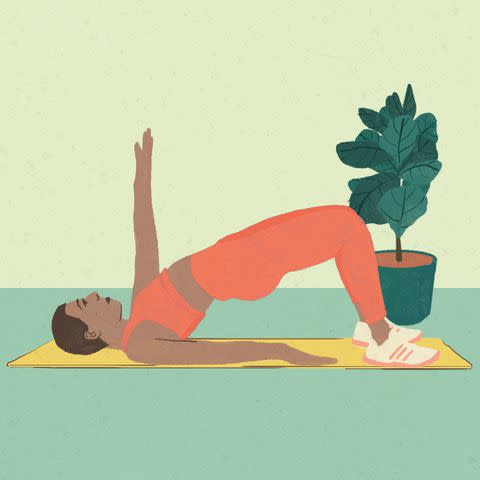
Kailey Whitman
Lie face up on the floor with knees bent and feet flat on the floor. Place hands on thighs or straight down at sides. Press into feet, engage glutes, and slowly lift hips up off the floor into a glute bridge until knees and hips are in line. Balancing in a glute bridge, extend left arm overhead until left elbow is next to left ear, using glutes to stabilize your pelvis and spine. Hold for five breaths and switch arms.
Isometric Abdominal Press
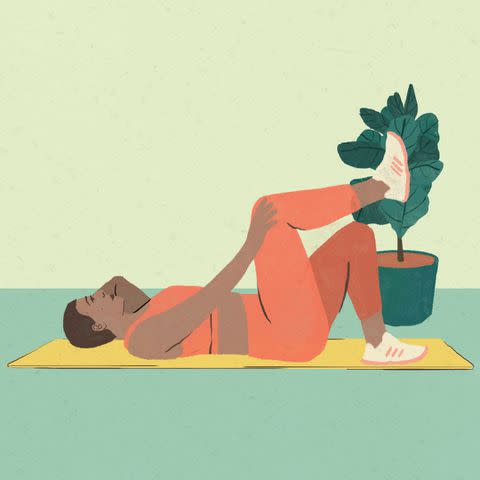
Kailey Whitman
Lie face up on the floor with knees bent and feet flat on the floor. Exhale and engage abdominals to keep ribs and pelvis stable. Place right hand on right knee and left hand behind head with elbow in by your temple. At the same time: Lift left shoulder off floor, lift right foot off floor (bringing it into tabletop position). Press right hand into right knee until you feel active engagement in abdominal muscles. Hold for five seconds then switch sides. Repeat five to 10 times.
Bent-Knee Supine Twist (Thoracic Rotation)
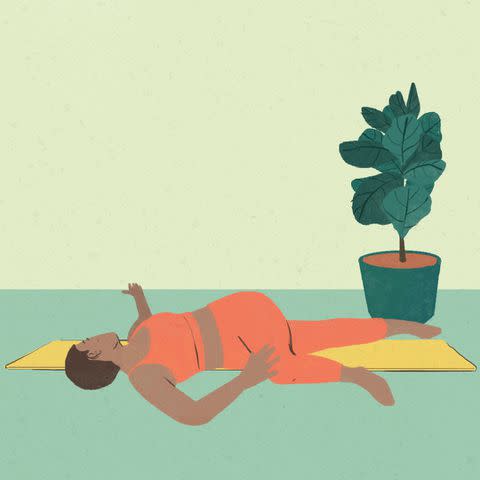
Kailey Whitman
Lie face up on the floor with knees bent and feet flat on the floor. Bring right knee toward chest. Using left hand as a guide, roll and drop the right knee across and over toward the left side of your body and let the left knee fall out and over onto the floor. Extend right arm straight out on the floor to the right at shoulder height and turn head to the right (if that feels comfortable). Hold for five breaths, making sure to breathe fully and deeply into the mid- and upper back. Release and repeat on the opposite side.
:7 Great Stretches for Your Mid-Back
Quadruped Hip Abduction
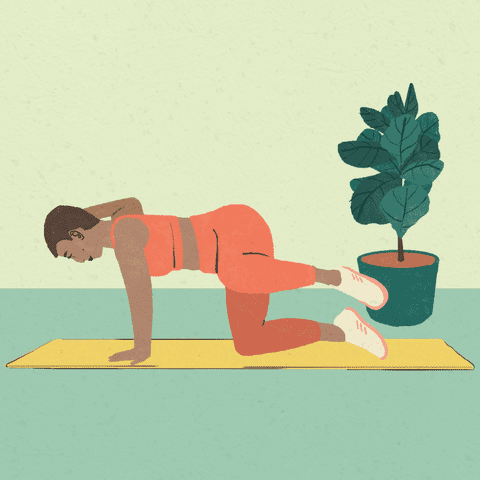
Kailey Whitman
Start on your hands and knees with toes on floor, heels up, knees aligned under hips, and wrists aligned under shoulders. Place right hand behind your head and lift head into hand. Without tipping the pelvis or rounding the spine, hover left knee no more than an inch off the floor, engage left glute, and slowly lift left knee out to the side five to 10 times. Switch sides and repeat.
Hip Hinge With Thoracic Rotation
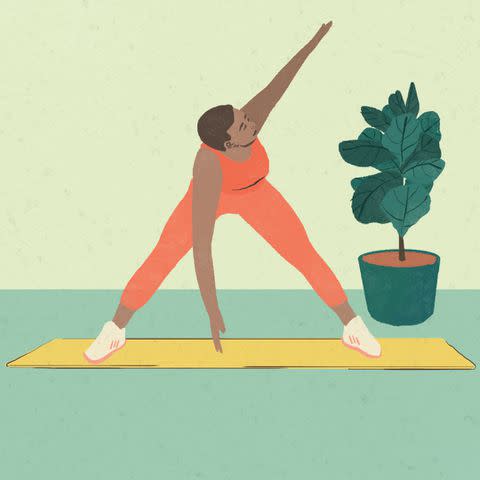
Kailey Whitman
Stand with feet hip-width apart. Keeping knees bent, hinge forward from hips until your torso is almost parallel with the floor (think of sending hips back as you hinge torso forward). Make sure abdominals are lifted and engaged and neck is aligned with spine. Place hands on shins or straight down in front. Inhale deeply and rotate to the right, opening chest to the right and lifting the right arm straight up toward the ceiling (as if you’re drawing a semicircle in the air to your right). Focus on twisting gently from the center of your back (your thoracic spine) instead of tilting or using your hips too much. Exhale and return right arm to center. Repeat on the left side, continuing to alternate sides five to eight times each.
:This Quick Full-Body Stretching Routine Will Help Loosen Stiff Muscles

